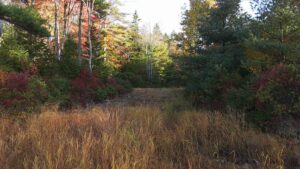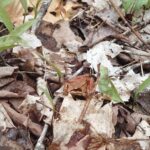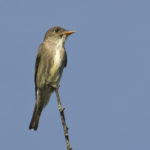Gillfillan Lake: Protecting more habitat for rare plants
31 Jan 2025
Gillfillan Lake is one of 53 lakes designated as High Priority for the recovery and management of a very special group of plants called Atlantic Coastal Plain Flora (ACPF). These unrelated plants form a unique group whose habitat is mainly restricted to the flat land along the Atlantic Coast from Florida to Nova Scotia called the Atlantic coastal plain. Nova Scotia is home to over 90 species in this group, concentrated mostly in the southwest region of the province, which is a well-known biodiversity hotspot known as Kespukwitk, one of the seven traditional districts of Mi’kma’ki. These rare plant species grow in low-nutrient environments where competition from other species is low. When water nutrient levels increase from activities like shoreline development and nutrient run-off, more common species can move in and outcompete these fragile plants.
Gillfillan Lake is a prime example of the type of inland freshwater shoreline that holds the delicately balanced habitat for this group of plants. Preserving the natural vegetation along the shoreline not only preserves this habitat but also helps maintain lake water quality.

The newly protected land along Gillfillan Lake.
The Nature Trust is thrilled to add 95 acres on the northeastern shore of Gillfillan Lake to our growing focus area of conservation lands in the Tusket River Watershed, where threatened species in the ACPF group can continue to thrive. The property includes over 400m of intact shoreline and data shows nearly continuous presence of a federally and provincially endangered coastal plains flower (whose habitat is restricted to the shorelines of only 12 lakes in southwestern Nova Scotia) along the entire shore of the property.
Located directly south of the provincially protected Tusket River Wilderness Area and near to several other Nature Trust Conservation Lands, this newly conserved property provides a strategic opportunity to increase habitat connectivity in the area.
In addition to its critical importance for plant life, the land is also likely to support Olive-Sided Flycatcher and Common Nighthawk, both considered species at risk. The property’s old-growth features, including White Pine snags, could support the nesting and roosting needs of species such as the Chimney Swift.
The property also holds several vernal pools, a seasonal wetland habitat that fills with water in the spring and dries up in the summer. Vernal pools are critical for the reproduction of amphibians such as Wood Frog and Spotted Salamander, which rely on these temporary habitats for breeding. The pools also support diverse invertebrate species, contributing to the local food web.
 This project was undertaken with the financial support of the Government of Canada through the federal Department of Environment and Climate Change’s Priority Places for Species at Risk Program.
This project was undertaken with the financial support of the Government of Canada through the federal Department of Environment and Climate Change’s Priority Places for Species at Risk Program.

Our thanks as well for generous support from the Nova Scotia Crown Share Land Legacy Trust, a critical source of land securement funding for Nova Scotia’s land trusts.




